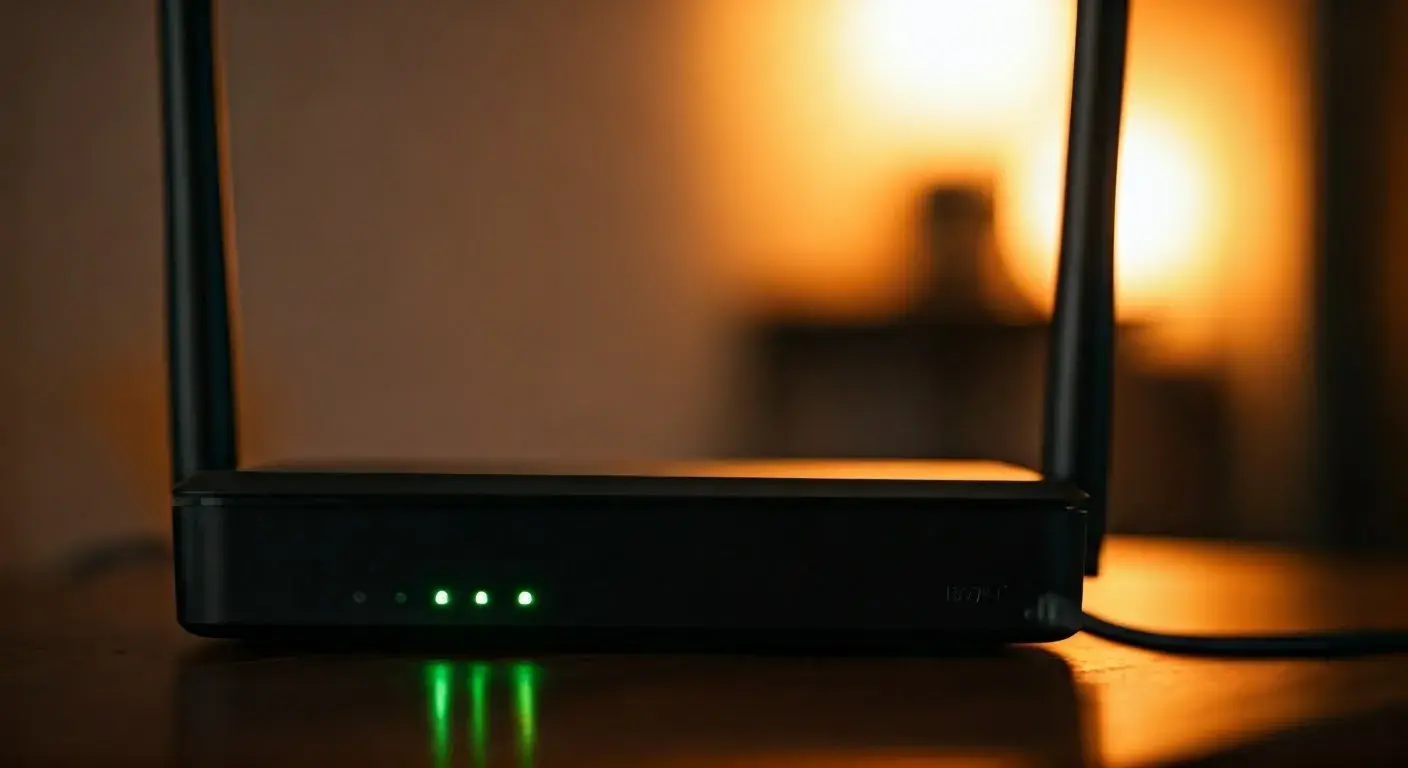Is 300 Mbps fast?

Is 300 Mbps internet speed fast enough for your needs in 2025? This comprehensive guide breaks down what 300 Mbps truly means, its capabilities for streaming, gaming, remote work, and multiple users. We explore how it stacks up against other speeds, factors affecting performance, and whether it's the right choice for your household.
Is 300 Mbps Fast? A Deep Dive into Internet Speeds in 2025
In the ever-evolving digital landscape of 2025, internet speed is no longer a luxury but a fundamental necessity. As our reliance on seamless online connectivity grows for work, entertainment, and communication, the question "Is 300 Mbps fast?" becomes increasingly pertinent. The answer, as with many technological queries, is nuanced. For many households, 300 Mbps represents a significant leap in performance, offering a robust and versatile internet experience. However, its "fastness" is relative to individual usage patterns, the number of connected devices, and the specific applications being utilized. This article aims to demystify 300 Mbps, providing a comprehensive analysis of its capabilities, limitations, and its place within the broader spectrum of internet speeds available to consumers in 2025. We will delve into the technical aspects, real-world applications, and provide actionable insights to help you determine if 300 Mbps is the optimal speed for your digital life.
The demand for higher bandwidth has surged dramatically. Streaming 4K content, engaging in high-fidelity online gaming, participating in video conferences with multiple participants, and managing a growing ecosystem of smart home devices all contribute to this increasing need. According to recent 2025 industry reports, the average household now has upwards of 15 connected devices, a figure that continues to climb. This escalating demand places greater pressure on internet connections, making the assessment of speeds like 300 Mbps more critical than ever. We will explore how this speed tier performs under various scenarios, helping you make an informed decision about your internet service provider (ISP) and plan.
Understanding Internet Speed: Mbps, Latency, and More
Before we can definitively answer whether 300 Mbps is fast, it's essential to understand the fundamental metrics that define internet performance. The most commonly discussed metric is speed, measured in Megabits per second (Mbps). However, other factors significantly impact the overall online experience.
Megabits per Second (Mbps) - Bandwidth
Mbps, or Megabits per second, refers to the bandwidth of your internet connection. Think of bandwidth as the width of a pipe. A wider pipe (higher Mbps) allows more data to flow through at any given moment. This is crucial for activities that require large amounts of data transfer, such as streaming high-definition video, downloading large files, or supporting multiple users simultaneously. 300 Mbps means your connection can theoretically transfer 300 million bits of data every second. It's important to distinguish between Megabits (Mb) and Megabytes (MB). There are 8 Megabits in 1 Megabyte. Therefore, 300 Mbps is equivalent to approximately 37.5 Megabytes per second (300 / 8 = 37.5). This distinction is vital when estimating download times for files.
Latency (Ping)
Latency, often referred to as "ping," measures the time it takes for a data packet to travel from your device to a server and back. It's measured in milliseconds (ms). Low latency is critical for real-time applications like online gaming, video conferencing, and voice calls. High latency can result in lag, delays, and a choppy experience, even with high bandwidth. For example, in online gaming, a high ping can mean the difference between winning and losing, as your actions register with a noticeable delay. For 2025, ideal latency for gaming is generally considered to be below 50ms, with sub-20ms being excellent. For general browsing and streaming, latency is less critical, but extremely high latency can still cause minor delays in page loading.
Jitter
Jitter is the variation in latency over time. High jitter means the delay between data packets is inconsistent, leading to choppy audio and video in calls and streams. Imagine a series of cars on a road; jitter is like the inconsistent spacing between them. Consistent spacing (low jitter) leads to a smoother flow.
Upload vs. Download Speed
Internet plans typically specify both download and upload speeds. Download speed is what you use to receive data from the internet (e.g., streaming, browsing, downloading files). Upload speed is what you use to send data to the internet (e.g., uploading photos/videos, sending emails with large attachments, video conferencing, online gaming). Most consumer plans offer significantly higher download speeds than upload speeds. For 300 Mbps plans, the download speed is the headline figure, while the upload speed might be considerably lower, perhaps ranging from 10 Mbps to 50 Mbps, depending on the ISP and technology (e.g., cable vs. fiber). For typical home use, download speed is more critical. However, if you frequently engage in activities like live streaming or large file uploads, a robust upload speed becomes important.
300 Mbps in Action: What Can You Actually Do?
Understanding the theoretical capabilities of 300 Mbps is one thing; understanding its practical implications for everyday use in 2025 is another. Let's break down how this speed tier performs across various common online activities.
Streaming Video
Streaming is one of the most bandwidth-intensive activities. Here's how 300 Mbps handles different resolutions:
- Standard Definition (SD): Requires about 3-5 Mbps. 300 Mbps can handle hundreds of simultaneous SD streams.
- High Definition (HD - 720p/1080p): Requires about 5-8 Mbps. 300 Mbps can comfortably support dozens of simultaneous HD streams.
- 4K Ultra HD (UHD): Requires about 25-50 Mbps per stream. A 300 Mbps connection can support approximately 6-12 simultaneous 4K streams.
For a typical household with 1-3 people streaming 4K content concurrently, 300 Mbps is more than sufficient. Even with multiple devices streaming different content, 300 Mbps offers a smooth experience without buffering, assuming other factors like Wi-Fi signal strength are optimal.
Online Gaming
Online gaming is sensitive to both bandwidth and latency. While 300 Mbps provides ample bandwidth for downloading game updates (which can be tens or even hundreds of gigabytes), its primary benefit for gaming lies in its ability to handle the game's data traffic without issue, especially when multiple devices are online. The latency (ping) is the more critical factor here. A 300 Mbps connection is usually paired with relatively low latency from the ISP, making it excellent for competitive online gaming. You can download large games quickly, stream gameplay in HD or 4K without impacting your game's performance, and enjoy a responsive gaming experience, provided your ping is low.
Video Conferencing and Remote Work
In 2025, remote work and frequent video calls are commonplace. A 300 Mbps connection is excellent for this purpose. High-definition video conferencing typically uses between 2-8 Mbps for download and 1-4 Mbps for upload per participant. With 300 Mbps download and a decent upload speed (e.g., 30 Mbps), you can easily support multiple simultaneous video calls in HD or even 4K without experiencing dropped connections or pixelation. This speed is also more than enough for accessing cloud-based applications, collaborating on documents in real-time, and participating in virtual meetings without interruption.
Downloading and Uploading Large Files
Downloading a 1 GB file (approximately 8,000 Megabits) on a 300 Mbps connection would theoretically take around 27 seconds (8000 Mb / 300 Mbps). In reality, due to overhead and network fluctuations, it might take closer to 30-45 seconds. This is exceptionally fast for most users. Uploading a 1 GB file, assuming a 30 Mbps upload speed, would take approximately 4.5 minutes. This is still quite reasonable for most personal use cases. For professionals who regularly upload massive video files or large datasets, higher upload speeds might be necessary, but for the average user, 300 Mbps download and a respectable upload is highly capable.
Smart Home Devices
The proliferation of smart home devices – thermostats, security cameras, smart speakers, smart TVs, etc. – increases the number of devices competing for bandwidth. While each individual smart device uses minimal bandwidth (often less than 1 Mbps), their sheer number can strain a slower connection. A 300 Mbps connection has more than enough capacity to handle a typical smart home ecosystem with dozens of devices, ensuring they operate reliably without impacting other internet activities.
Factors Influencing Your 300 Mbps Experience
While 300 Mbps is a strong advertised speed, your actual experience can be influenced by several factors. It's crucial to understand these to ensure you're getting the most out of your connection.
Your Router and Wi-Fi Network
The router is the gateway to your home network. An old or low-quality router can become a bottleneck, preventing you from achieving the full 300 Mbps speed, especially over Wi-Fi. Ensure your router supports modern Wi-Fi standards like Wi-Fi 6 (802.11ax) or Wi-Fi 6E for optimal performance. The placement of your router also matters. Obstacles like walls, metal objects, and distance can degrade Wi-Fi signal strength and speed. For larger homes, a mesh Wi-Fi system might be necessary to ensure consistent coverage and speeds throughout the property.
Wired vs. Wireless Connections
For the most reliable and fastest speeds, a wired Ethernet connection is always preferred. Wi-Fi, while convenient, is subject to interference and signal degradation. Even with a 300 Mbps plan, you might only achieve 150-250 Mbps on a Wi-Fi connection, depending on the factors mentioned above. Connecting critical devices like gaming consoles, desktop computers, or smart TVs directly to the router via Ethernet cable can ensure you receive speeds closer to the advertised 300 Mbps.
Number of Connected Devices and Concurrent Usage
As discussed earlier, the more devices actively using the internet simultaneously, the more bandwidth is consumed. A 300 Mbps connection is generally sufficient for a medium to large household with many devices. However, if you have, for instance, five people all streaming 4K video, gaming online, and participating in video calls at the exact same time, you might start to notice some slowdowns, though it would still likely be a usable experience. Congestion within the home network is a key factor.
Your Internet Service Provider (ISP) and Network Congestion
The speed advertised by your ISP is often the maximum theoretical speed under ideal conditions. Actual speeds can fluctuate due to network congestion, especially during peak hours (evenings and weekends) when many users in your area are online. The type of technology your ISP uses (e.g., fiber optic, cable, DSL) also plays a role. Fiber optic connections generally offer the most consistent and reliable speeds, while cable can be subject to more congestion. DSL speeds are typically much lower than 300 Mbps.
Device Capabilities
The devices you use also have limitations. An older smartphone or laptop might not have the hardware to process data at 300 Mbps, even if your internet connection is capable. Ensure your devices have modern network cards and sufficient processing power to take advantage of high-speed internet.
Comparing 300 Mbps to Other Speed Tiers
To truly gauge if 300 Mbps is fast, let's compare it to other common internet speed tiers available in 2025.
| Speed Tier | Typical Use Cases | Is it Fast? |
|---|---|---|
| 10-50 Mbps | Basic web browsing, email, SD streaming, single-user HD streaming. | Slow for most modern needs. Only suitable for very light usage or single users. |
| 100-200 Mbps | HD streaming, online gaming, moderate remote work, supporting a few devices. | Good for many households, but can struggle with heavy 4K streaming or many simultaneous users. |
| 300 Mbps | Multiple 4K streams, heavy online gaming, robust remote work, supporting many smart devices. | Very fast for most households. Offers excellent performance and flexibility. |
| 500-1000 Mbps (1 Gbps) | Extremely heavy usage, multiple users simultaneously, large file transfers, professional creative work, future-proofing. | Extremely fast. Often overkill for average households but ideal for power users and large families. |
| Gigabit+ (2 Gbps+) | Demanding professional applications, large-scale data transfers, future-proof for emerging technologies. | Cutting-edge speed. Primarily for businesses or very niche high-demand users. |
As the table illustrates, 300 Mbps sits comfortably in the "very fast" category for the average consumer in 2025. It significantly outperforms lower tiers and offers a substantial upgrade for households experiencing slowdowns with less bandwidth. While Gigabit speeds are faster, the incremental benefit for many everyday tasks might not justify the often higher cost, making 300 Mbps a sweet spot for performance and value.
Is 300 Mbps Right for Your Household in 2025?
Deciding if 300 Mbps is the right fit depends on a few key questions about your household's internet habits.
How many people live in your home and use the internet?
For a household of 1-2 people, 300 Mbps is likely more than enough, offering ample room for multiple activities. For families of 3-5 people, especially if they are heavy internet users (streaming, gaming, remote work), 300 Mbps is an excellent choice that will likely meet all needs without issue.
What are your primary internet activities?
If your main activities include:
- Streaming 4K content on multiple devices simultaneously.
- Engaging in competitive online gaming.
- Working from home with frequent video conferencing and large file transfers.
- Managing a large number of smart home devices.
- Downloading large files or games regularly.
Then 300 Mbps is an ideal speed tier for you. If your usage is primarily basic web browsing, email, and occasional SD/HD streaming, 300 Mbps might be more than you need, and a lower tier could suffice, potentially saving you money. However, given the trend towards higher bandwidth consumption, future-proofing with 300 Mbps is often a wise investment.
What is your current internet speed, and are you experiencing issues?
If you are currently on a plan below 100 Mbps and frequently experience buffering, slow downloads, or lag, upgrading to 300 Mbps will be a dramatic and noticeable improvement. It will likely resolve most of your current connectivity frustrations.
What is your budget?
While 300 Mbps offers excellent performance, it is typically more expensive than lower-tier plans. Compare pricing from different ISPs in your area. Sometimes, the price difference between a 200 Mbps plan and a 300 Mbps plan is minimal, making the upgrade worthwhile. Conversely, if budget is a primary concern and your usage is light, a lower tier might be more appropriate.
Maximizing Your 300 Mbps Connection
Once you have a 300 Mbps plan, here are some best practices to ensure you're getting the most out of it:
Invest in a Quality Router
As mentioned, your router is crucial. Look for routers that support Wi-Fi 6 (802.11ax) or Wi-Fi 6E. These offer faster speeds, better efficiency, and improved performance in crowded wireless environments. Ensure the router's internal specifications can handle the speeds you're paying for.
Utilize Ethernet Cables
For devices that require the most stable and fastest connection (e.g., gaming consoles, desktop PCs, streaming boxes), connect them directly to the router using an Ethernet cable. This bypasses potential Wi-Fi interference and ensures you receive speeds close to the maximum 300 Mbps.
Optimize Wi-Fi Placement and Consider Mesh Systems
Place your router in a central, open location, away from obstructions and other electronic devices that might cause interference. If you have a large home or multiple floors, a mesh Wi-Fi system can extend your network's reach and provide consistent speeds throughout your entire house.
Regularly Test Your Speed
Use reputable online speed test tools (e.g., Ookla Speedtest, Fast.com) periodically, especially during peak hours. Test both wired and wireless connections. If your speeds consistently fall far short of 300 Mbps, contact your ISP to troubleshoot the issue.
Understand Your ISP's Technology
Fiber optic internet is generally the most reliable and offers the best performance. Cable internet is also good but can be subject to neighborhood congestion. If you have DSL, 300 Mbps is likely not achievable. Knowing your ISP's technology helps set realistic expectations.
The Future of Internet Speeds and 300 Mbps
The demand for internet speed is only expected to increase. Emerging technologies like augmented reality (AR), virtual reality (VR) requiring high bandwidth and low latency, more sophisticated AI applications, and the continued growth of 8K streaming will push the boundaries of what's considered "fast." In this context, 300 Mbps in 2025 represents a solid, capable connection that can handle current demands and most near-future applications. While Gigabit speeds and beyond are becoming more accessible and will eventually become the norm, 300 Mbps is likely to remain a highly relevant and satisfactory speed tier for a significant portion of households for several more years. It strikes a balance between robust performance and affordability, making it a practical choice for many.
Conclusion
In conclusion, for the vast majority of households in 2025, a 300 Mbps internet connection is unequivocally fast. It provides ample bandwidth to support a wide array of demanding online activities simultaneously, including multiple 4K video streams, high-fidelity online gaming, robust remote work setups with frequent video conferencing, and the operation of an extensive smart home ecosystem. This speed tier represents a significant upgrade from lower plans and offers a smooth, reliable, and responsive online experience for most users.
While 300 Mbps is exceptionally capable, it's essential to remember that your actual experience can be influenced by factors such as the quality of your router, Wi-Fi signal strength, the number of devices connected, and potential network congestion from your ISP. To truly maximize your 300 Mbps connection, investing in a modern Wi-Fi 6 router, utilizing Ethernet connections for critical devices, and optimizing router placement are highly recommended practices. Regular speed tests will also help ensure you are receiving the speeds you are paying for.
When considering if 300 Mbps is right for you, evaluate your household's size, your primary internet usage habits, and your budget. If you frequently stream high-definition content, game online, work remotely, or have many connected devices, 300 Mbps is an excellent choice that provides both current performance and a degree of future-proofing. For those with very light internet needs, it might be more than necessary, but the benefits of a more robust connection often outweigh the marginal cost increase compared to lower tiers. As technology continues to advance, speeds like 300 Mbps will remain a strong and practical option, striking a crucial balance between high performance and accessibility for the modern connected home.





